Children always need extra space. And not when they're small and in their cots, with toys put away by their parents every evening. They need it when they're older and need a desk, a bed, a place to play and room for the games and toys that are lying all over the place. And when there are more of them, it's the beds that take up the most space. If it's an apartment block instead of a house, the space problem is even more pressing. But there are designs for children's beds, some of them quite ingenious, that manage to solve the space problem.
Combined cots with storage places
As in adults' rooms, there are all sorts of storage cupboards in children's rooms. They're needed for clothes, books, school stuff, toys. The problem is that the closets take up a good part of the room, leaving little room for play.
Most beds have a crate for storing blankets, pillows and other sleeping essentials. That's the idea behind the idea to save space. That crate turned into several shelves and the bed kept getting higher and higher. And that's how the bed that looks like it's built on top of the wardrobe came about. An idea as simple as it is useful. Instead of a bed next to the wardrobe, there's a bed on the wardrobe and the space saved is used for play and toys.
Another space that can be used for storage is the ladder. If the bed is raised, the child needs a ladder to climb into bed. Instead of a simple staircase - that cat staircase - the steps are converted into storage spaces in the pattern of the stairs between the levels. The child will climb into bed by stepping on cupboards of increasing size or by climbing up a ladder inside which cupboards have been built.
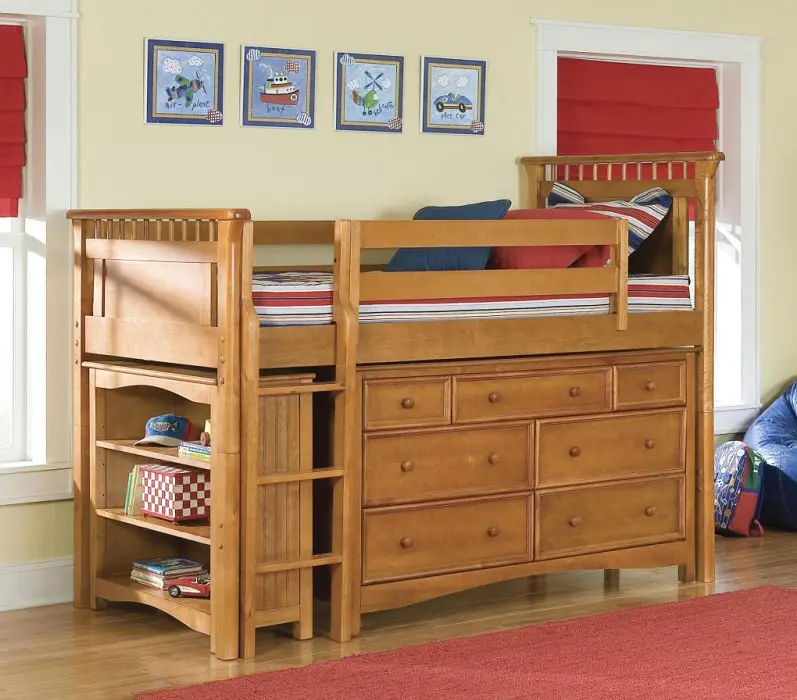
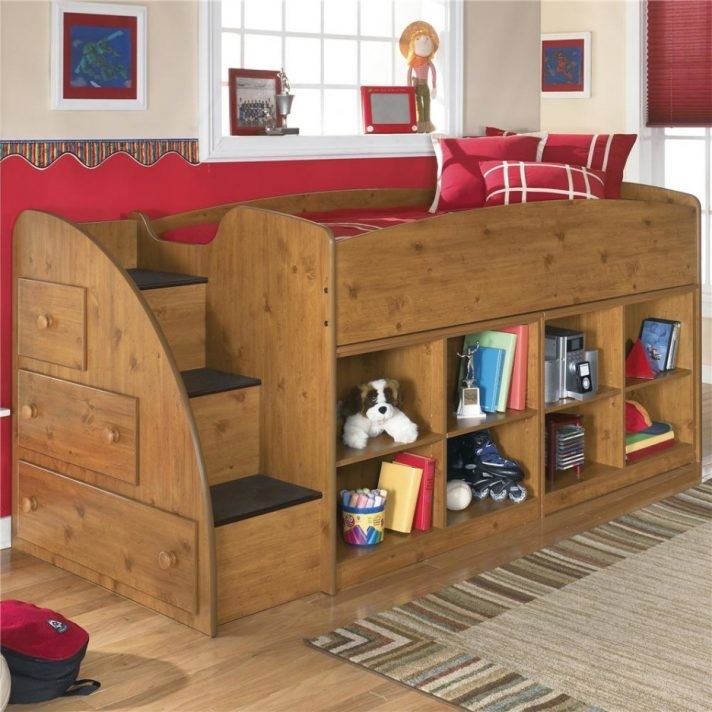
Combined children's beds and study desk
Here too, the solution is to use the space vertically. In the bunk-bed model, the lower bed is replaced by a place for studying and the upper bed is positioned so as not to disturb the child when sitting at the desk. It's a good solution for houses, which are usually higher, but more difficult to fit into an apartment.
Another drawback of this solution can be the lack of light. This is why the arrangement should be such that a window or other light source is nearby. The lack of light can be compensated for by a bright lamp on the desk, but the constant use of this light and the lack of natural light from the window can cause problems with your child's eyesight over time.
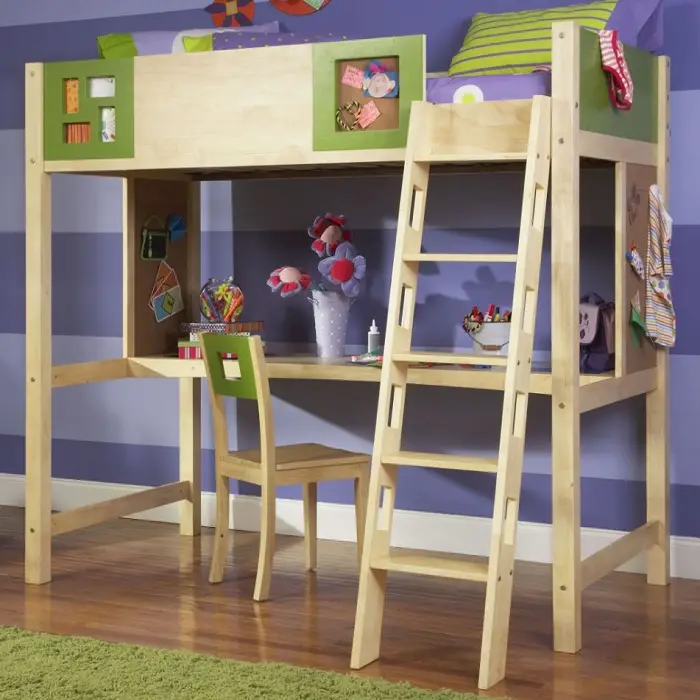
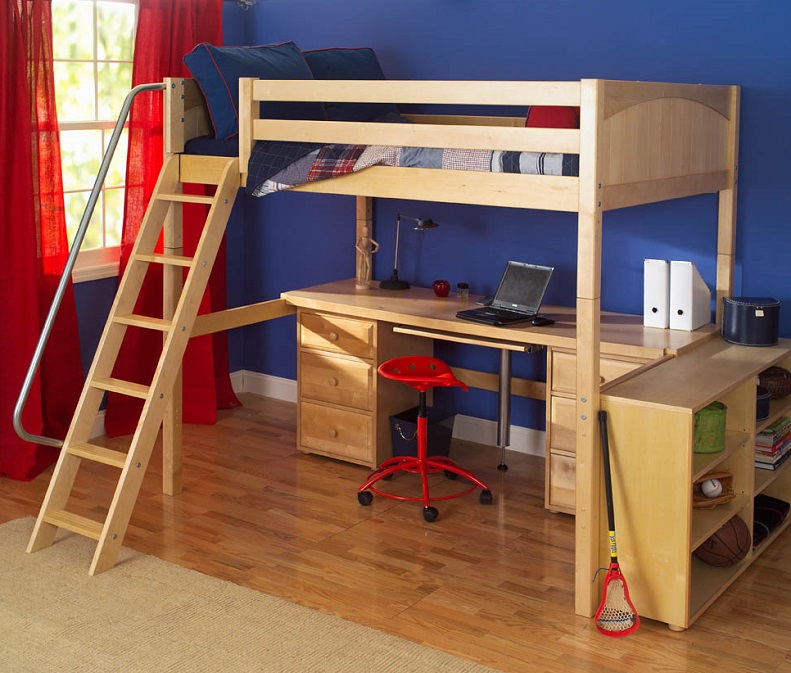
Combine several children's beds to make the most efficient use of space
If space problems arise when there is only one child, even more so when there are 2 or more. But it's still the beds that save the day, and it's still the vertical use of space.
The classic solution is bunk beds. Equal beds, or wider on the bottom and narrower on the top for the youngest child, are common options in homes with two children.
There is also the solution of beds on the same level, but this level is closer to the ceiling. Storage and office space can be arranged underneath them, so you can get rid of the eternal "who sleeps upstairs" argument.
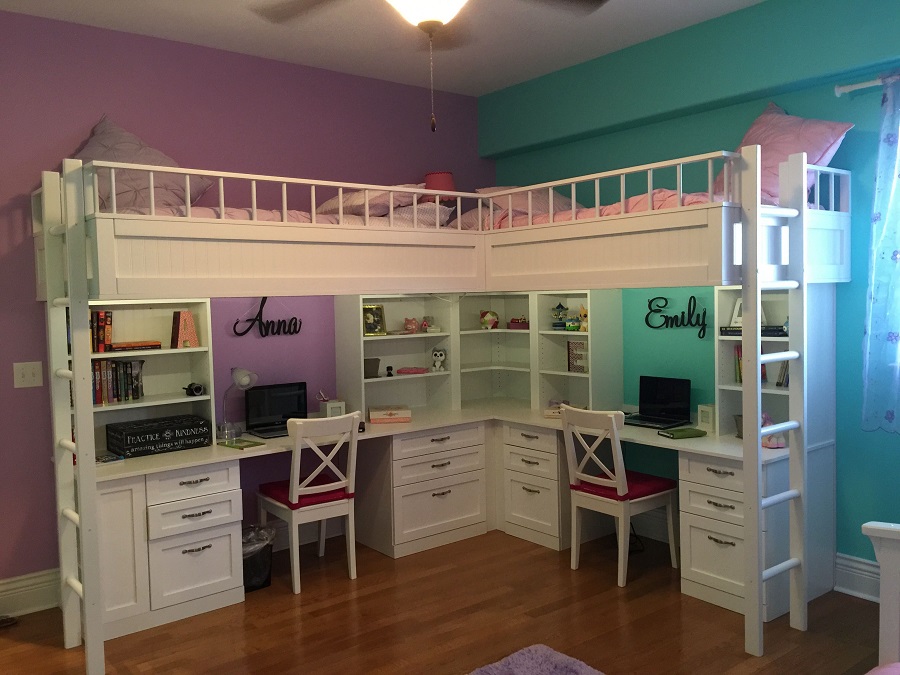
Another solution is to overlap the beds, but not parallel but perpendicular. The overlapping is also done at the top of the room, the distance between the bunk beds is much smaller than with normal bunk beds. The overlap is made on the portion where the children stand with their feet. It creates a high corner assembly that has a shorter side because one of the beds goes under the other, shortening it by a width. It is a solution that can save the day when the bed meets a door or window.
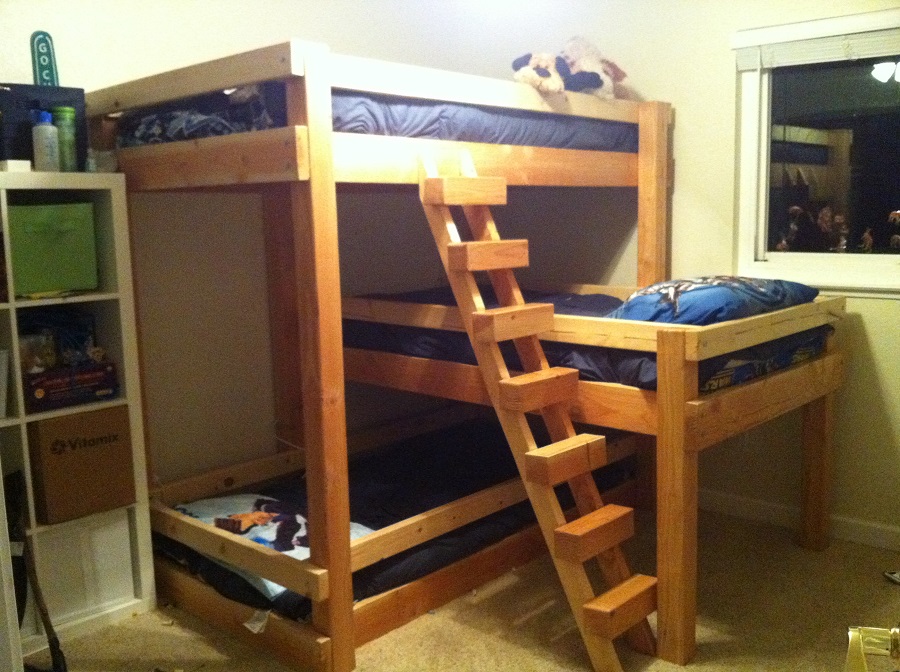
Convertible solutions
Convertible furniture has always been a solution for using space efficiently. Extending armchairs, sofas that become double beds, beds that stand up against the wall during the day are just a few of the solutions that allow rooms to be used as efficiently as possible.
The most popular solution for children's beds is the bed that goes... under the bed. Basically the bed looks like it has a drawer for underwear only this drawer is another bed. Only in the evening, when, as if by magic, another place to sleep miraculously appears, is it "uncovered". Usually there is the one-drawer version, but I have also seen the 3-sleeper version.
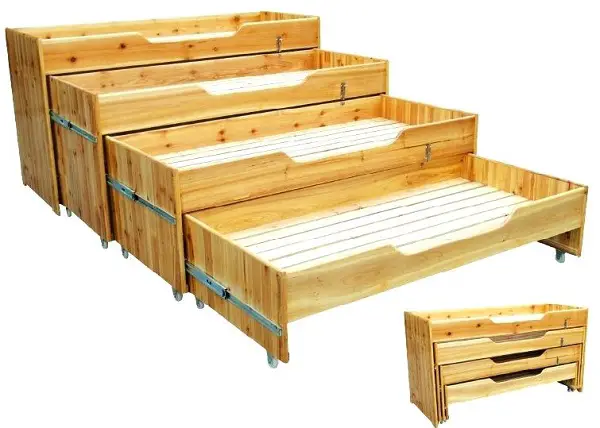
The desk that goes under the bed in the upper area of the room, the staircase for the upper bed turned into a desk top during the day or the book and games cupboards turned into a staircase for the upper bed are just a few examples of transformation. This way space is used more intelligently and the child doesn't feel the squeeze of excess furniture.

Baby beds made from oak with great attention to detail
I was pleased to discover that there is also the possibility of well-made customized solutions so that you can also enjoy the quality of well-made furniture. I told you about Nicu Rosioru when I talked about wooden gamesso used before cell phones. Those games where we played together being together. Now our kids play together alone.
But back to beds. Nicu Roșioru makes solid oak beds for children, combined with a desk, storage space or library. The focus is equally on making furniture as efficient as possible, but also on the beauty of oak. Below are 2 examples of such children's beds.
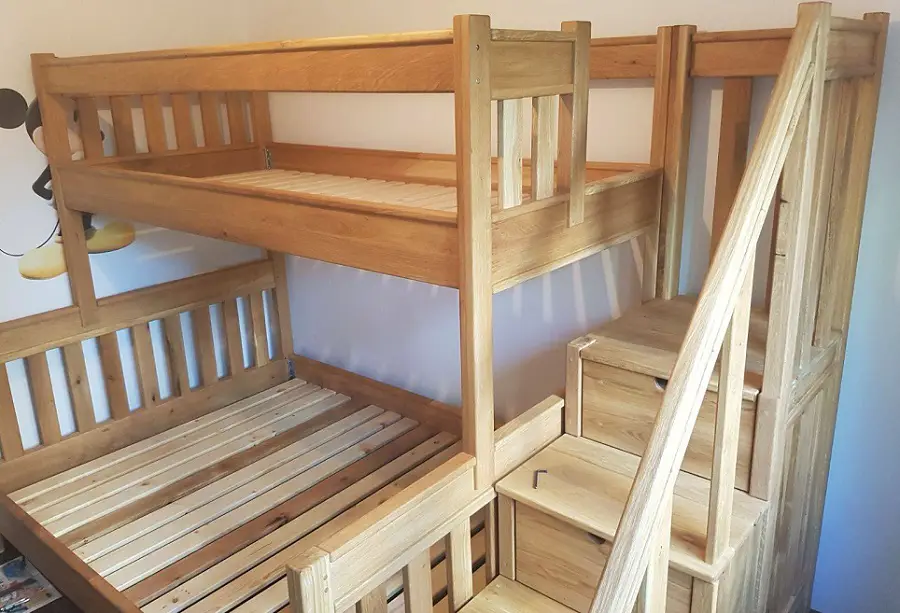
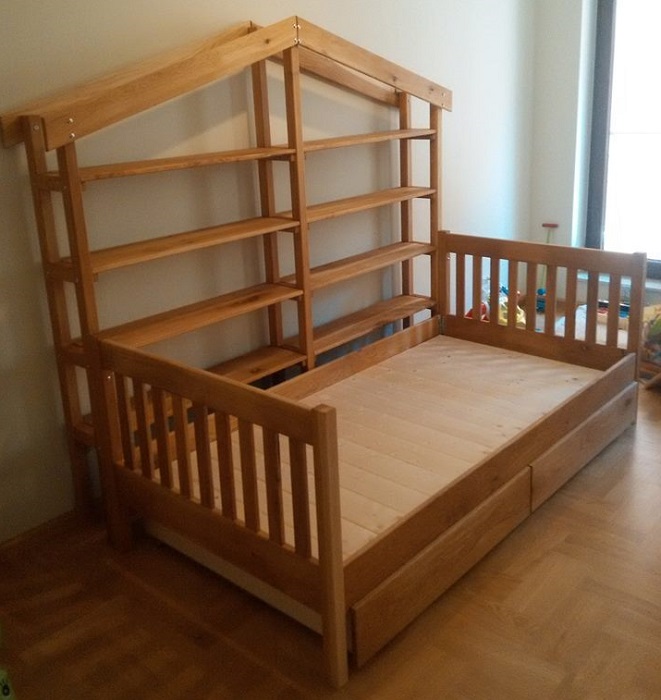
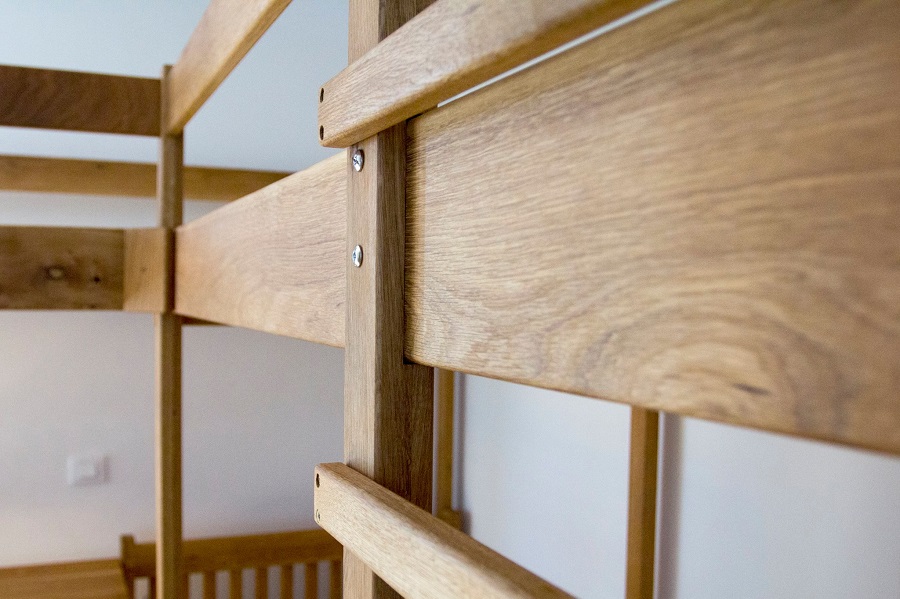
Find more on his facebook page, Quercus Creativ Art. You can also find games and toys made from oak.
Children these days are under all sorts of pressures: long hours, lots of homework, more or less compulsory extracurricular activities. These are activities that keep them under tension for many hours a day. I believe that providing places at home for play and relaxation is almost a duty. And where there doesn't seem to be enough space, it can be gained by clever arrangements like those above.


























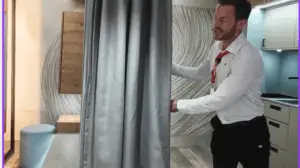
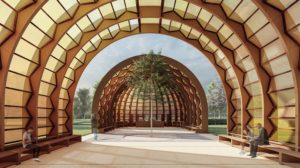
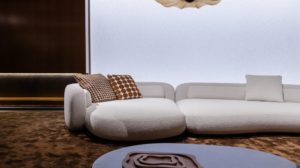

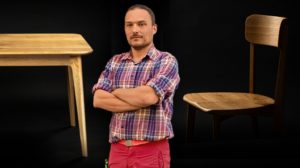

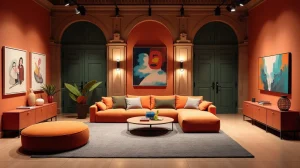




Add comment